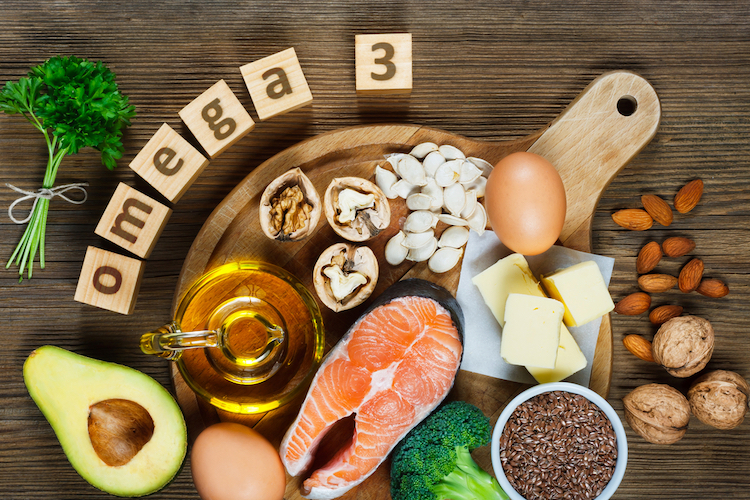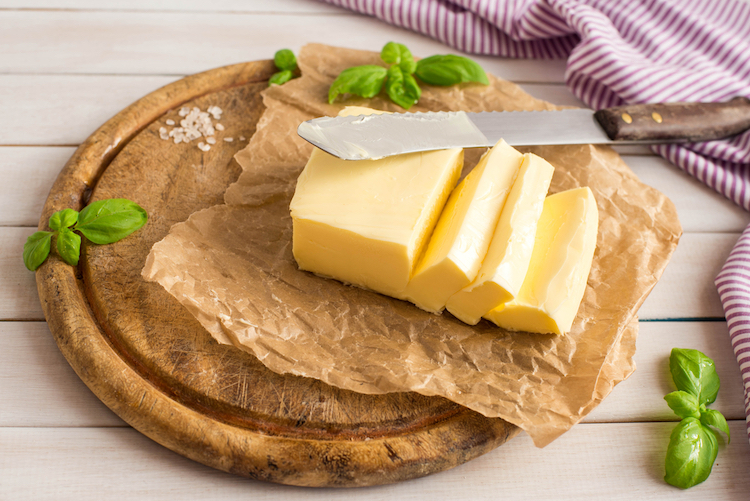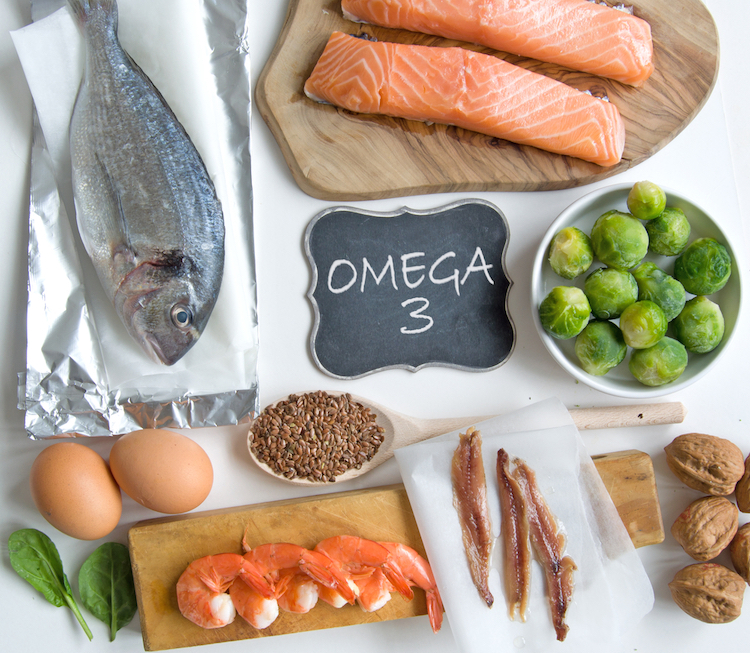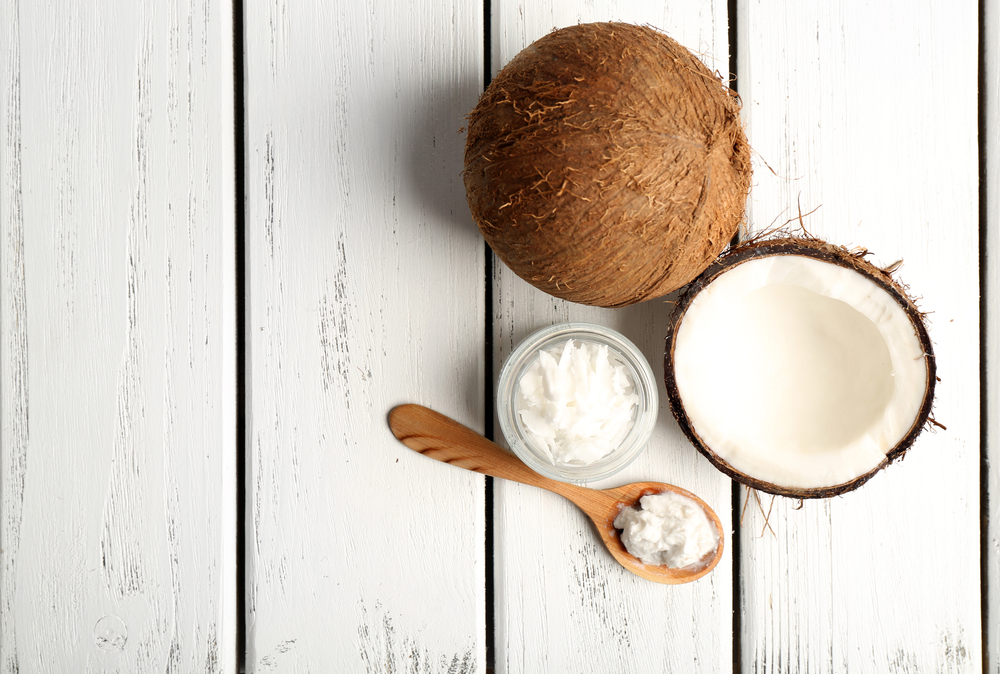The Complete Guide to Healthy Fats

I have a little secret for you—fat isn’t a bad word. In fact, as you’ll see, it’s quite a good word, and it’s completely necessary for you to live a healthy and happy life. If you’ve been fatty-acid-phobic for most of your adult life, get ready to have your fears erased and learn some great tips for incorporating fat into your diet without the fear of having a heart attack or packing on pounds.
But first, we have to get some history out of the way.
Why are people afraid of fats in their diet? Well, a lot of this started with a landmark study called the Seven Countries Study. In that study, which was done in the 1950s, researchers found that countries that ate the highest levels of fat (especially saturated fat) also had the highest rates of obesity and heart disease.
The natural conclusion was that eating fat makes you fat and unhealthy. Based on this idea (and some other nefarious things), the government made recommendations on what our diet should look like—namely a low-fat, higher-carbohydrate diet.
Additionally, just recently it came out that in the 1960s, the sugar industry bribed doctors through its lobbyists to promote studies that blamed heart disease on fats and not the real culprit: sugar. Between the Seven Countries Study, the sugar lobby, and just plain “conventional wisdom” mistakes, we became convinced that fat in our diet is deadly.
Thankfully, studies and new thinking are changing people’s minds. A 2010 study from the American Journal of Clinical Nutrition found no correlation between dietary fat intake and heart disease. We also now know that had more countries been included in the Seven Countries Study, the correlation between dietary fat and cardiovascular disease would have been negated.

Different Types of Fats and the Fat Balance
As with most things in life, though, not all fats are created equal.
While we’re firmly on the side of “eating fat is safe and beneficial,” there are definitely things you need to consider before you go dumping half a stick of butter in your morning coffee or saving containers full of bacon grease.
Some fats are much better for you than others, and there are certainly some fats we highly recommend that you avoid as much as possible. There are also some things to consider regarding how you balance the types of fats in your diet.
First, let’s look at the types of fats you’ll encounter:
Saturated Fats: Remember all those scary stories you heard as a kid— the ones with really bad characters meant to teach you things or people to avoid? Like the “big bad wolf” in Little Red Riding Hood. We’ve long been taught that saturated fat is “bad” for us. But unlike that wolf (who really was bad), saturated fats are not the evil killer they’ve been made out to be.
In fact, saturated fat serves a crucial role in the body. It makes up cell membranes, which assist with calcium absorption, help you break down essential fatty acids, and provide you with a great source of vitamins. Additionally, there has been no correlation found between saturated fat intake and heart disease.
Monounsaturated Fats: If you were to look at a fat molecule under a microscope, it would look like a long chain. With monounsaturated fatty acids (MUFAs), there is only one carbon bond in its fatty acid chain. The more bonds a fatty acid has, the more solid the fat will be at room temperature.
Since monounsaturated fats only have a single bond, these are often liquid at room temperature. Common monounsaturated fats are your typical cooking oils, including olive, peanut, and coconut oils (among others). They’re also found in foods like avocado and nuts.
For the longest time, this was one of the fats deemed “okay” for you to consume—but even then, it was recommended that you restrict your intake.
Polyunsaturated Fats: Just as monounsaturated fats have only one carbon bond, polyunsaturated fatty acids (PUFAs) have multiple bonds. These fats are not nearly as stable as their mono and saturated cousins. They’re also often liquid, even when refrigerated.
These fats are found in seeds and nuts, as well as certain types of fish. Oils that are higher in PUFA tend to go rancid quicker than MUFAs, and while you can cook with PUFAs, they tend to have a lower smoke point and become oxidized (not a good thing).
Essential Fatty Acids: Essential fatty acids (EFAs) are acids that your body doesn’t produce on its own. You can only get these through your diet. There are two: alpha-linoleic acid (which is an omega-3) and linoleic acid (an omega-6).
It’s important to get both omega-3s and omega-6s in your diet; an ideal ratio is typically 1:1. This is the type of ratio our Paleolithic, hunter-gatherer ancestors would likely have had. At worst, it should be 1:4.
What is our current Western diet ratio, you may ask? Try 1:20 or 1:30. With a 1:20 ratio (or worse), you’re setting your body up for all sorts of inflammation and related health issues. This is a completely out-of-whack balance, and it’s important that you try to get this ratio as close to 1:1 as you can.

Trans Fats and Hydrogenated Oils: If there were fats in our diet akin to the “big bad wolf,” it would be these bad boys. Trans fats are unnatural modifications of fats— these modifications were made to keep food “shelf stable” for longer. Food scientists took unsaturated fats (as opposed to saturated fat like butter) and “hydrogenated” them.
In essence, trans fats have their hydrogen atoms shifted around within their fatty acid chain. This hydrogenation changes the fat so that it can remain solid at room temperature. The problem with this is that your body does not recognize these fats, and when ingested, they can cause all sorts of health issues.
A diet high in trans fats is associated with inflammation, hardening of the arteries, obesity (yes, these fats cause you to get fat), and risk for heart disease. The easiest way to tell if a food has trans fats is to look in the ingredient list for anything that says “hydrogenated.” If you see that on your label, we recommend avoiding that food.
Facts About Fats
Sugar is the real “fat culprit”: Sugar in your diet is the main factor in obesity today. The average American eats more than 150 pounds of sugar every year. Between this sugar and the starchy carbs in bread and other snacks, your body is pumping out insulin to deal with all the sugar coursing through your veins.
Insulin is your body’s tool to bring blood sugar levels back to normal—and since you likely can’t burn off all the sugar you eat, it gets stored as fat. With all that insulin having to be pumped out to regulate blood sugar, your body eventually becomes insulin resistant—and now you have diabetes.
Fat kills hunger: Fat is satiating (a fancy word for “satisfying your hunger”). Eating a high-fat, lower-carbohydrate diet is one of the best ways to control hunger and calories. Since fat satisfies hunger better, you inadvertently eat less. Increased fat consumption also allows your body to access stored fat for energy.
Fat is your body’s preferred fuel source: Speaking of accessing energy, fat (and not carbs) is actually the energy source our bodies prefer. Fat provides 9 kcals per ounce, more than twice the energy of carbs and proteins. There’s a good reason we store fat throughout our bodies.
While food shortages aren’t much of an issue in today’s environment, our hunter-gatherer ancestors would have had a need to store body fat for energy in lean times.
The 5 Best Healthy Fats
As we mentioned earlier, not all fats are created equal. The ones we’ve chosen here are the best fats you should be consuming on a regular basis.
Organic Extra-Virgin Coconut Oil: Coconut oil, which is a saturated fat and would have been a bogeyman years ago, is possibly the healthiest fat you can consume. Coconut oil is great for much more than just your diet. It’s beneficial for skin and hair care as well as an effective anti-inflammatory food.
Coconut oil is easy to incorporate into your diet— it’s great for cooking and baking, but it can also be eaten straight out of the jar. Additionally, many people have started adding a tablespoon to their coffee with some heavy cream as an alternative to “bulletproof” coffee.
If you’re going to add coconut oil to your diet, always opt for organic, extra-virgin coconut oil; some of the refined or processed brands lose much of their health benefits.

Grass-Fed Butter/Ghee: Grass-fed butter is simply butter the way nature intended. It comes from cows that have been allowed to eat grass instead of being grain-fed. This type of butter has a very beneficial omega-3/omega-6 fat profile.
Ghee is simply clarified butter—that is, butter that has been cooked to remove solids. While regular butter is good for low-heat cooking (think frying an egg), ghee actually has a higher smoke point, so it’s good for higher-heat cooking. Butter is also rich in many fat-soluble vitamins, especially selenium—a potent brain-friendly antioxidant.
Avocado: This green fruit (that’s right, it’s a fruit!) is very high in monounsaturated fat and loaded with fiber and lots of vitamin E. Avocados are great as a side or mixed in with salads. You can also purchase avocado oil and use it as a dressing or cooking oil.
Organic Extra-Virgin Olive Oil: Another oil that should be a staple in your diet is extra-virgin olive oil. This oil—a major component in the heart-healthy Mediterranean diet—acts as an antioxidant and is anti-inflammatory. It’s also good for brain and memory function.
But buyer beware: don’t just purchase any old “extra-virgin olive oil” off your grocery store shelves. A 2011 study found that many of the brands available in grocery stores were either fake olive oil (a mixture of olive oils and other lower-quality oils), not extra-virgin, or had been bottled for so long that many of the health benefits had disappeared.
When you look for high-quality olive oil, always opt for organic extra-virgin olive oil, and in this instance, price does matter. Lower-priced olive oils tend to be lower quality, so opt for brands that sell for more than $10 per liter.
Olive oil is great as a dressing for salads and drizzled over-cooked foods.

Omega-3 Fatty Acids: Omega-3 fatty acids are one of the “essential” fats your body can’t produce on its own. The only way to get omega-3s is by including them in your diet through whole foods, supplementation, or some combination of the two.
There are three different types of omega-3s: alpha-linolenic acid (ALA), docosahexaenoic acid (DHA), and eicosapentaenoic acid (EPA). You should aim for two to three grams per day of omega-3s, preferably DHA and EPA. You can find them in seafood sources, especially salmon and sardines. ALA is found in nuts and seeds (such as walnuts and flax seeds) as well as grass-fed beef.
You can also supplement with a good omega-3 fatty acid supplement such as fish oil or krill pills, but generally speaking, whole food options are your best bet.
The 4 Best Healthy Fats for High-Heat Cooking
Cooking with fats or adding fat to your meal is one way to make them taste better and make them more satisfying. But you don’t want to use just any old fat.
First, let’s discuss smoke points. When oil or fat is heated above its smoke point, it breaks down and will produce a bluish smoke—you don’t want to cook things in oil or fat that’s past its smoke point. This oxidizes the fats and releases free radicals (bad) into food. You don’t want free radicals all throughout your body.
Here are the best fats for cooking:
Grass-Fed Butter/Ghee: Actually, here we’re going to want to opt for ghee when available. Grass-fed butter can be used for most typical lower-heat cooking or sauteing, but opt for ghee anytime you’re looking to do higher temp frying.
The reason ghee is better suited for higher temps is because the clarification process of ghee cooks out and removes the protein solids found in regular butter, leaving no volatile solids to burn.
Smoke points: 350°F for butter, 485°F for ghee

Organic Refined Coconut Oil: Once upon a time, coconut oil was one of the “bad boys” of fats. Thankfully, that’s no longer the case, and this oil is back on the “good” list. Coconut oil is a great cooking fat because it’s high in saturated fat and is relatively stable.
Be aware that this oil (especially if you don’t get the refined kinds) can have a strong coconut flavor. This is not necessarily a bad thing, especially if used for baking, but in frying and sauteing, it could set off the flavor of your food.
Smoke point: 350°F
Grass-Fed Beef Tallow: Think of tallow as butter, but instead of being made of milk, it’s made of animal fat. Tallow is high in saturated fat, so it’s fairly heat stable and is an ideal frying oil. In fact, some restaurants use tallows in their frying operations instead of corn or canola oils.
Tallow is also mild, so it shouldn’t impart a lot of its own flavor into your meal. When you purchase it, make sure you’re getting grass-fed beef tallow, which has a much better omega-3 to omega-6 profile than conventionally raised beef tallow. This fat is great for pan frying, especially steaks. It’s also great with vegetables.
Smoke point: 420°F
Organic Non-Extra-Virgin Olive Oil: Notice we’re not recommending extra-virgin olive oil here. EVOO is mostly monounsaturated fatty acids, and heating causes it to break down and lose most of its benefits.
As it stands, non-extra-virgin olive oil doesn’t have a very high smoke point either, but this version is better suited for cooking. This type of oil is great for sauteing vegetables or smaller cuts of meat. It’s not recommended for frying of any kind.
Smoke point: Varies depending on the type of oil used, but generally 320°F to 400°F
Eating Fat Won’t Make You Fat
Repeat after me: fat does not make you fat.
While it’s true that overeating and consuming too many calories will inevitably lead to weight gain and increased body fat, it’s actually fairly difficult to eat “too much” fat. Fat is a satiating macronutrient (especially so when you’re on a low-carb diet). Also, when you’re eating more dietary fat and fewer carbohydrates, your body can more easily access your body fat stores for energy.
A higher-fat diet doesn’t predispose you to major health risks such as diabetes or cardiovascular disease. The trend in America to opt for low-fat, higher-carb diets coincides with a massive increase in diabetes, heart disease, and obesity. It’s quite clear what is making us fat and sick: sugar and highly refined carbohydrates.
If you’re confused about whether to eat fats or not, don’t be. Dietitians, doctors, researchers, the food industry, and consumers are finally coming around to understanding that fat doesn’t make you fat, nor does it make you sick.
The main thing you need to know is that most dietary fats are beneficial and necessary to live a healthy life. Just be sure to include a variety of fats, and focus primarily on increasing your intake of omega-3 fatty acids to help balance out the pro-inflammatory omega-6s.
Additionally, avoid trans fats as much as possible (these are fats in sweets and sugary foods, as well as margarine and other butter substitutes). Let’s be realistic—these are obvious foods you shouldn’t be eating (at least not regularly), so avoiding them should be a key part of your healthy eating plan.
